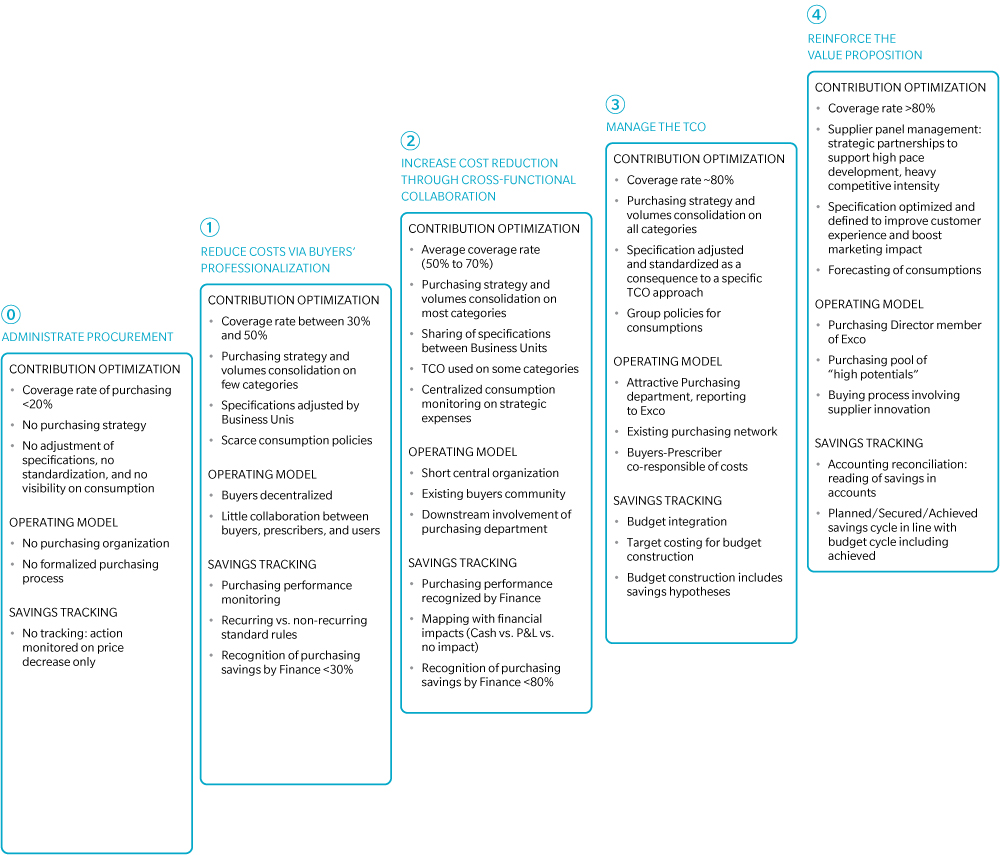Over the past two years, the Value Sourcing & Supply Chain team has interviewed more than 100 Chief Procurement Officers and senior executives across industries in Europe and North America. We have married the group’s collective insights with our expertise and compiled anecdotes highlighting business initiatives spearheaded by these procurement organizations.
In this Playbook, we explore the evolution of the procurement function’s missions, from its original cost reduction role to risk management and to contribution to growth as a strategic partner. We then turn to the key dimensions of the procurement organization’s operational model, covering strategy, processes, structure, human resources, and management system and tools.
Gregory Kochersperger, Global Leader of the Value Sourcing & Supply Chain Practice
The Maturity staircase of the procurement cost control
Faced with the difficult financial environment of recent years, the Procurement organization's cost reduction mandate is a top priority, and savings remain the main objective. More and more ambitious targets are being assigned to Procurement departments, which remain the driving force in maintaining business competitiveness.

For Procurement to become a high performing resource, the entire top management, and in particular the CEO, needs to create the right conditions and onboard the entire organizationGregory Kochersperger, Global Leader, Value Sourcing & Supply Chain Practice








